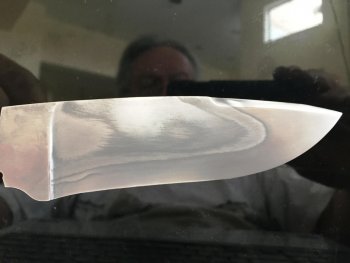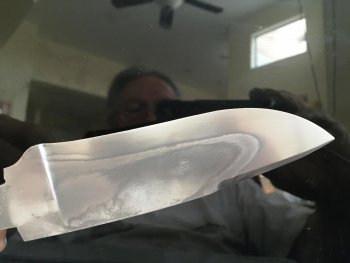wmhammond
Well-Known Member
I would appreciate any comments. Here are pictures of both sides of a knife I am working on. This is a piece of W-2. To get it to this point I rough ground it to 100 grit, put on the heat resistant cement, quenched it for 2 seconds in a 205 brine solution and finished it in Canola oil, tempered 2 cycles of 450 for an hour and air cool, cleaned it up and finished ground it to 3000 grit, hand sanded 150 grit - 220 grit - 500 grit - 1000 grit, 15 minutes in heated vinegar and buffed with buffing compound. As you can see in the lower corner just next to the recasso the real bottom edge is just beginning to show. You can't see it in the picture but the entire real Hamon is just barely visible to the naked eye. I keep thinking that there is something I can do to bring out the real hamon line to look like it does by the recasso all the way around but I don't know what it is. I could sure use some help. Thanks,
Wallace


Wallace




